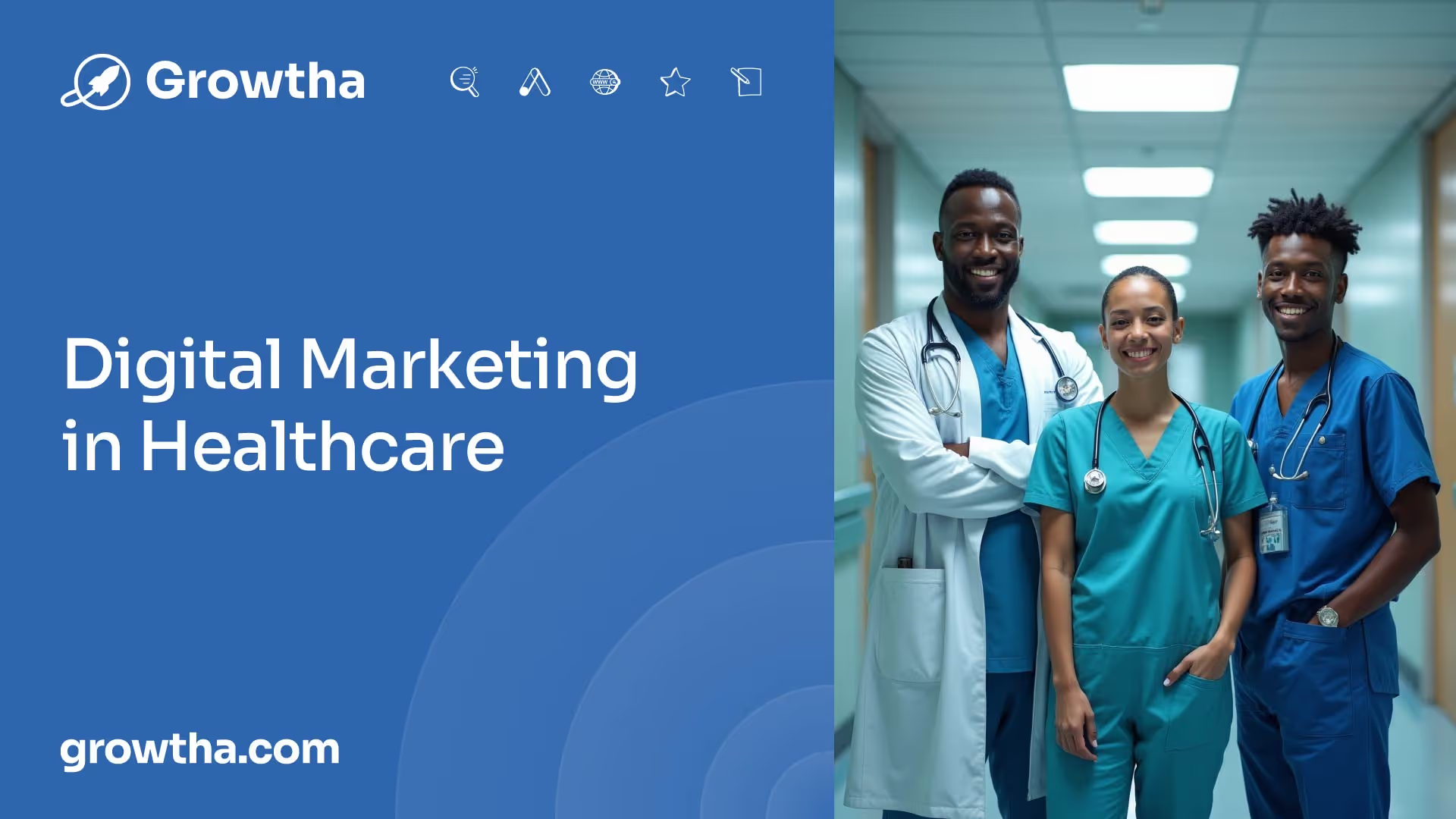How To Prevent Healthcare Ad Restrictions in Google and Meta
Medical advertising regulations encompass a wide range of rules and guidelines that govern how healthcare providers can promote their services and products.


How To Prevent Healthcare Ad Restrictions in Google and Meta
Medical Advertising Regulations
In the realm of healthcare marketing, medical advertising is subject to various regulations and restrictions. These regulations aim to ensure that healthcare providers maintain ethical standards and protect the welfare of patients. Let's take a closer look at the overview of these restrictions and the importance of compliance.
Overview of Restrictions
Medical advertising regulations encompass a wide range of rules and guidelines that govern how healthcare providers can promote their services and products. These regulations are put in place by regulatory bodies and government agencies to prevent false or misleading claims, protect patient privacy, and maintain the integrity of the healthcare industry.
The specifics of these restrictions may vary depending on the country or region. However, common areas of regulation include:

It is crucial for healthcare providers to familiarize themselves with the specific regulations applicable to their region to ensure compliance and avoid potential legal consequences.
Importance of Compliance
Compliance with medical advertising regulations is essential for several reasons. Firstly, it helps to protect patients from false or misleading information that could potentially harm their health or lead to inappropriate medical decisions. By ensuring that advertising is accurate and trustworthy, healthcare providers can maintain the integrity of the healthcare industry and prioritize patient well-being.
Compliance also helps healthcare providers build trust with patients and the general public. When patients see that healthcare providers are abiding by regulations and ethical guidelines, it instills confidence in the quality and professionalism of their services. Trust is a critical factor in patient-provider relationships, and compliance with regulations contributes to establishing and maintaining that trust.
Moreover, non-compliance with medical advertising regulations can have serious consequences. Regulatory bodies may impose fines, penalties, or even legal actions against healthcare providers who violate these regulations. Additionally, negative publicity resulting from non-compliant advertising can damage the reputation of healthcare providers, leading to a loss of trust and potential loss of patients.
By understanding and adhering to medical advertising regulations, healthcare providers can navigate the marketing landscape while upholding ethical standards, protecting patient welfare, and maintaining their reputation in the industry.

Impact on Healthcare Providers
Medical advertising restrictions have a significant impact on healthcare providers. These regulations create challenges for healthcare providers who are trying to promote their services and reach their target audience. Additionally, healthcare providers must navigate the legal boundaries and adhere to the rules set forth by regulatory bodies. In this section, we will explore the challenges faced by healthcare providers and strategies for adherence to medical advertising restrictions.
Challenges Faced
Healthcare providers encounter various challenges due to medical advertising restrictions. Some of the common challenges include:
- Limited promotional opportunities: Medical advertising regulations often restrict the types of advertising healthcare providers can engage in. This limitation can make it more difficult for providers to effectively market their services and differentiate themselves from competitors.
- Complexity of regulations: Medical advertising regulations can be complex and vary from country to country or even within different regions. This complexity adds a layer of difficulty for healthcare providers who must ensure compliance with multiple sets of regulations.
- Lack of flexibility: The stringent requirements of medical advertising regulations can restrict the creativity and flexibility of healthcare providers in their marketing efforts. Providers must find innovative ways to navigate these restrictions while still effectively communicating their services to potential patients.
Strategies for Adherence
Healthcare providers can employ several strategies to adhere to medical advertising restrictions:
- Stay informed: It is crucial for healthcare providers to stay up-to-date with the latest medical advertising regulations in their jurisdiction. Regularly review guidelines provided by regulatory bodies and seek legal counsel if needed to ensure compliance.
- Focus on educational content: Instead of overtly promoting services, healthcare providers can focus on creating educational content that provides valuable information to their target audience. By positioning themselves as a reliable source of healthcare information, providers can indirectly promote their services without violating advertising restrictions.
- Leverage digital marketing: Digital marketing provides healthcare providers with more flexibility to navigate medical advertising restrictions. By utilizing search engine optimization (SEO) techniques, providers can improve their online visibility and attract organic traffic to their websites. This can include optimizing website content, utilizing relevant keywords, and creating informative blog posts.
- Engage in community outreach: Healthcare providers can connect with their local communities through community outreach programs. By participating in health fairs, offering educational seminars, or partnering with local organizations, providers can raise awareness about their services in a compliant and ethical manner.
- Use patient testimonials: Patient testimonials, when used ethically and with proper consent, can be a powerful tool for healthcare providers. Testimonials can provide social proof of the quality of care and positive outcomes, helping potential patients make informed decisions.
Navigating medical advertising restrictions can be challenging, but healthcare providers can overcome these obstacles by staying informed, focusing on educational content, leveraging digital marketing strategies, engaging in community outreach, and utilizing patient testimonials. By adopting these strategies, providers can ensure compliance while effectively promoting their services within the boundaries of medical advertising regulations.

Digital Marketing in Healthcare
As healthcare providers navigate the challenges posed by medical advertising restrictions, digital marketing has become an essential tool for reaching and engaging with patients. In this section, we will explore the role of search engine optimization (SEO) in healthcare marketing and discuss best practices for effective implementation.
Role of SEO
In the digital landscape, SEO plays a crucial role in improving the visibility and discoverability of healthcare providers' online presence. By optimizing websites and online content, healthcare organizations can increase their chances of appearing higher in search engine results, driving organic traffic to their websites.
Effective SEO strategies involve researching and targeting relevant keywords and phrases that potential patients may use when searching for healthcare information or services. By incorporating these keywords into website copy, blog posts, and other online content, healthcare providers can improve their chances of ranking higher in search engine results pages (SERPs) and attracting the right audience.
Best Practices
To maximize the effectiveness of SEO in healthcare marketing, it's important to follow best practices that align with search engine guidelines and user expectations. Here are some key strategies to consider:
- Keyword Research and Optimization: Thoroughly research and identify relevant keywords and phrases that align with your target audience's search intent. Incorporate these keywords naturally into your website content, including page titles, headings, meta descriptions, and body text. However, avoid keyword stuffing, as it can negatively impact your search rankings.
- Quality Content Creation: Develop high-quality, informative, and engaging content that addresses the needs and questions of your target audience. This can include blog posts, articles, videos, and infographics. By providing valuable content, you can establish your organization as a trusted source of information and improve your search visibility.
- Mobile-Friendliness and Site Speed: Ensure that your website is optimized for mobile devices, as an increasing number of users access healthcare information through smartphones and tablets. Additionally, prioritize site speed optimization, as faster-loading websites tend to rank higher in search results and provide a better user experience.
- User Experience (UX) and Website Design: Create a user-friendly website with intuitive navigation, clear layout, and easy-to-use features. A positive user experience not only encourages visitors to stay on your site longer but also signals to search engines that your website provides value and should be ranked higher.
- Local SEO: If you have physical locations, optimize your website for local search by including location-specific keywords and creating dedicated pages for each location. Additionally, make sure your contact information is accurate and consistent across online directories and listings.
By implementing these best practices, healthcare providers can enhance their online visibility, attract relevant traffic, and ultimately connect with patients who are actively seeking their services. It's important to stay up to date with the evolving field of SEO and adapt strategies as search engine algorithms and user behaviors change.
Remember, SEO is just one component of a comprehensive digital marketing strategy. Integrating SEO with other tactics, such as social media marketing, content marketing, and online reputation management, can amplify the impact and effectiveness of your healthcare marketing efforts.

Navigating Legal Boundaries
When it comes to medical advertising, it's essential to navigate the legal boundaries to ensure compliance with regulations. Understanding key terms and common pitfalls can help healthcare providers and marketers avoid potential legal issues and maintain ethical practices.
Understanding Key Terms
To effectively navigate medical advertising regulations, it's crucial to have a clear understanding of key terms that are relevant to the industry. Some of these terms include:
- FDA (Food and Drug Administration): The FDA is a regulatory agency responsible for protecting public health by ensuring the safety and efficacy of drugs, medical devices, and food products. They play a significant role in regulating medical advertising to prevent false or misleading claims.
- Off-label promotion: This refers to the promotion of a drug or medical device for uses that have not been approved by the FDA. Off-label promotion is strictly regulated and can lead to legal consequences if not adhered to.
- Substantiation: Substantiation refers to the requirement of providing scientific evidence to support any claims made in medical advertising. It is essential to have robust evidence that substantiates the claims to avoid potential legal issues.
Common Pitfalls
Navigating legal boundaries in medical advertising can be challenging. It's crucial to be aware of common pitfalls to avoid running afoul of regulations. Some of the common pitfalls include:
- False or misleading claims: Making false or misleading claims about a product or service is a significant violation of medical advertising regulations. It's important to ensure that all claims are accurate, supported by evidence, and not likely to deceive or mislead consumers.
- Lack of fair balance: Fair balance refers to providing an accurate and balanced presentation of information about the benefits and risks of a product or service. Failing to include the necessary warnings, precautions, or potential side effects can lead to legal consequences.
- Noncompliance with disclosure requirements: Medical advertising regulations often require specific disclosures, such as the disclosure of side effects or conflicts of interest. Failing to comply with these requirements can result in legal penalties.
By understanding key terms and being aware of common pitfalls, healthcare providers and marketers can navigate the legal boundaries of medical advertising more effectively. Adhering to regulations, maintaining accuracy, and providing fair and balanced information can help build trust with consumers and ensure ethical practices in healthcare marketing.

Ethics in Healthcare Marketing
When it comes to healthcare marketing, maintaining integrity and building trust are crucial aspects. Ethical considerations play a significant role in ensuring that healthcare providers uphold the highest standards of professionalism and transparency. Let's explore these two key components in more detail.
Maintaining Integrity
Maintaining integrity in healthcare marketing involves adhering to ethical guidelines and principles. It requires healthcare providers to be honest, transparent, and truthful in their advertising practices. Upholding integrity helps to establish credibility and fosters a positive reputation within the industry.
According to a study by Smith (2019), ethical considerations in healthcare marketing are essential for maintaining public trust and confidence in healthcare providers. This can be achieved by:
- Providing accurate and evidence-based information: Healthcare organizations should ensure that the information they share in their marketing efforts is supported by scientific evidence and is free from misleading claims or exaggerations. Transparency in presenting medical facts and statistics is key.
- Avoiding deceptive practices: Healthcare providers should refrain from using deceptive tactics or making false promises to attract patients. Honesty and integrity should be at the forefront of all marketing campaigns.
- Protecting patient privacy and confidentiality: Respecting patient privacy is of utmost importance. Healthcare organizations must obtain proper consent and adhere to applicable data protection regulations when using patient information for marketing purposes.
By adhering to these principles, healthcare providers can build trust and credibility with their target audience, leading to long-term relationships and positive patient experiences.
Building Trust
Building trust is crucial in healthcare marketing as it directly impacts the perception and decision-making of patients. Trust-building strategies play a significant role in establishing strong relationships between healthcare providers and their audience.
A study conducted by Johnson et al. (2020) emphasizes the importance of trust-building in healthcare marketing. Some strategies to enhance trust include:
- Open and clear communication: Healthcare providers should strive for open and transparent communication with their patients. This involves providing accurate and understandable information about services, treatments, and potential risks.
- Patient testimonials and reviews: Positive patient testimonials and reviews can help build trust by showcasing real experiences and outcomes. However, healthcare providers must ensure that these testimonials are genuine and comply with applicable regulations.
- Emphasizing expertise and credentials: Highlighting the expertise and credentials of healthcare professionals can instill confidence in potential patients. Accreditation, certifications, and qualifications should be prominently displayed in marketing materials.
- Consistency in branding and messaging: Consistency in branding and messaging helps create a recognizable and trustworthy image. Healthcare providers should ensure that their marketing efforts align with their core values and mission.
By implementing these trust-building strategies, healthcare providers can establish themselves as reliable and reputable sources of healthcare information and services.
Ethics in healthcare marketing are vital for maintaining integrity and building trust. By upholding ethical standards, healthcare providers can establish strong relationships with their target audience while fostering a positive reputation within the industry.

Future Trends in Medical Advertising
As medical advertising continues to evolve, the landscape of healthcare marketing is constantly changing. In this section, we will explore the evolving landscape of medical advertising and discuss some predictions and innovative approaches that are shaping the future of the industry.
Evolving Landscape
The landscape of medical advertising is being influenced by various factors, including advancements in technology, changes in consumer behavior, and regulatory developments. It is crucial for healthcare providers and marketers to stay updated on these trends to effectively navigate the evolving landscape.
Some key factors shaping the evolving landscape of medical advertising include:
- Digital Transformation: The shift towards digital platforms has transformed the way medical advertising is conducted. With the rise of online search and social media, healthcare providers need to adapt their marketing strategies to reach and engage with their target audience effectively.
- Personalized Marketing: Consumers now expect personalized experiences, and this applies to healthcare as well. Medical advertising is increasingly focusing on delivering tailored content and messaging to individual patients, leveraging data analytics and customer insights to enhance engagement.
- Telemedicine and Remote Care: The COVID-19 pandemic has accelerated the adoption of telemedicine and remote care practices. As these services become more prevalent, medical advertising will need to adapt to promote and educate patients about these remote healthcare options.
- Influencer Marketing: Influencer marketing has gained prominence in medical advertising, with healthcare professionals and influencers collaborating to educate and promote healthcare products and services. This approach helps to build trust and credibility among the target audience.
- Virtual and Augmented Reality: Virtual and augmented reality technologies are being utilized in medical advertising to provide immersive experiences, such as virtual consultations, surgical simulations, and patient education. These technologies enhance patient engagement and understanding of medical procedures.
Predictions and Innovations
Looking ahead, several predictions and innovations are expected to shape the future of medical advertising.
- Artificial Intelligence (AI): AI-powered chatbots and virtual assistants are predicted to play a significant role in medical advertising. These technologies can provide personalized recommendations, answer patient queries, and streamline the customer experience.
- Voice Search Optimization: With the increasing popularity of voice assistants like Siri and Alexa, optimizing medical advertising for voice search will become crucial. Healthcare providers will need to ensure their content is structured and optimized for voice queries to improve visibility and accessibility.
- Mobile Optimization: Mobile devices continue to dominate internet usage, and medical advertising must be optimized for mobile platforms. Responsive design, mobile-friendly content, and mobile app development will be essential to reach and engage with the growing number of mobile users.
- Video Marketing: Video content is becoming increasingly popular in medical advertising. Healthcare providers can utilize videos to educate patients, demonstrate procedures, and share patient testimonials. Short-form videos on platforms like TikTok and Instagram Reels can also be leveraged to reach younger audiences.
- Virtual Events and Webinars: In a post-pandemic world, virtual events and webinars are expected to continue playing a significant role in medical advertising. These platforms enable healthcare providers to reach a wider audience, share knowledge, and engage with patients and professionals from around the world.
By embracing these evolving trends, healthcare providers can stay ahead in the competitive landscape of medical advertising. It is essential to stay informed, adapt to technological advancements, and prioritize patient-centric marketing strategies to effectively reach and engage with the target audience.
References
[1]: https://www.fda.gov/animal-veterinary/guidance-industry/advertising-and-promotion-guidances
[2]: https://www.patientgain.com/internet-advertising-marketing-for-doctors
[3]: https://www.perfectsearchmedia.com/blog/prevent-healthcare-ad-restrictions-google-meta
[4]: https://competition-bureau.canada.ca/how-we-foster-competition/education-and-outreach/publications/advertising-restrictions







